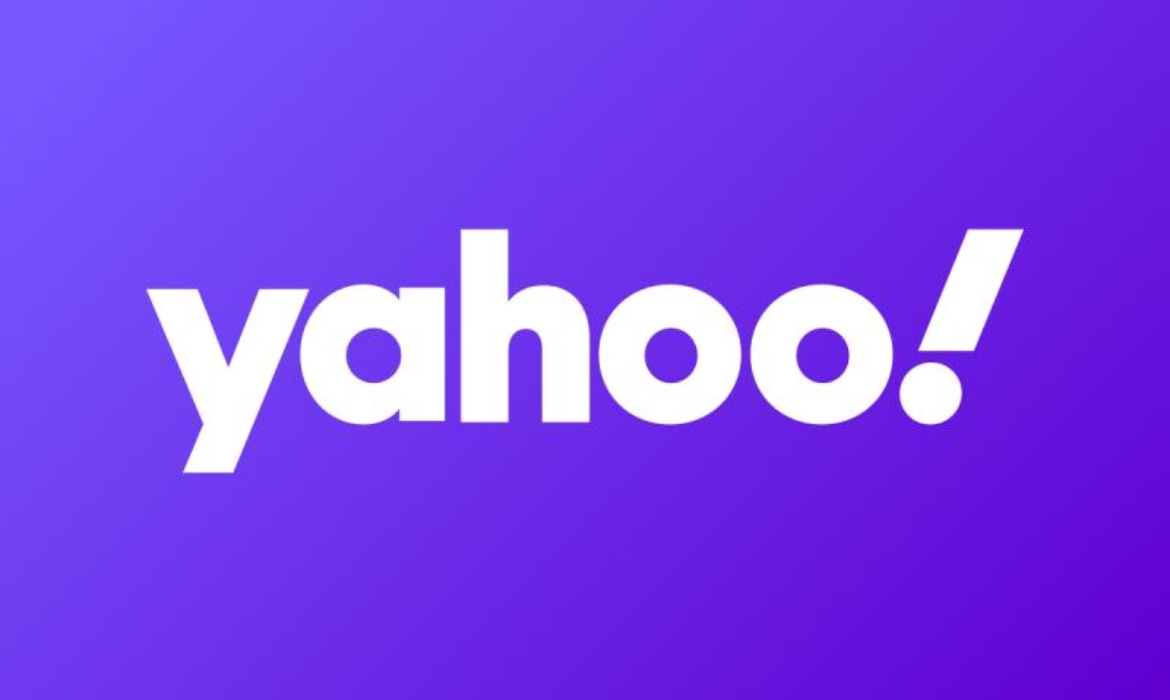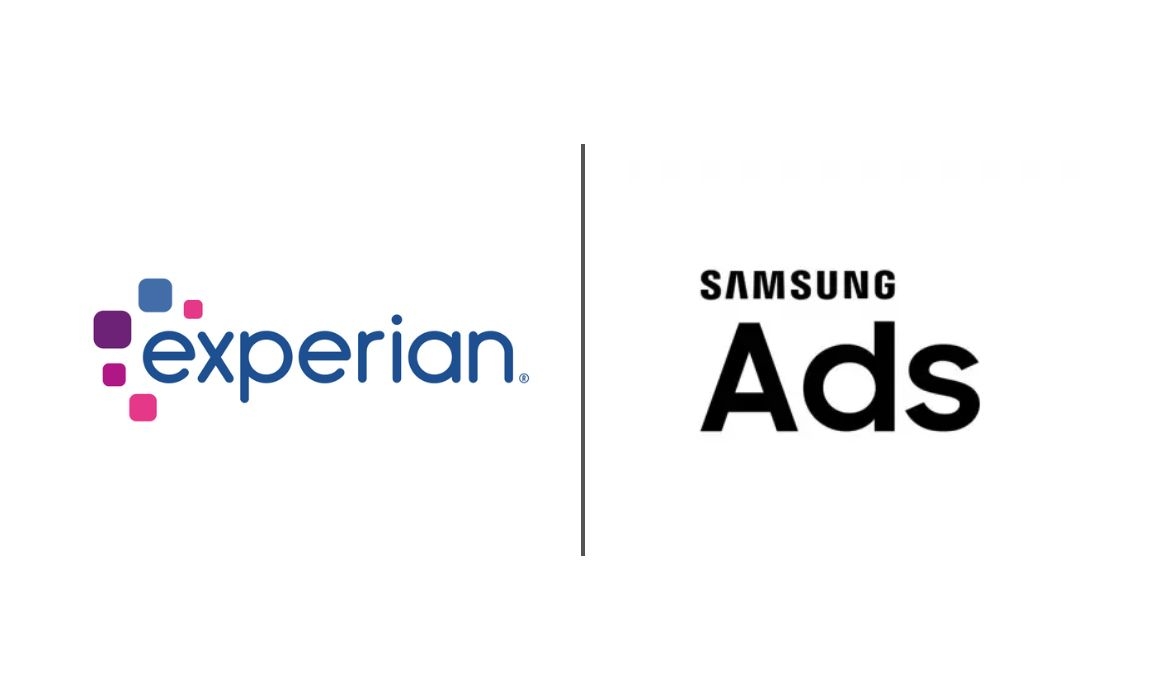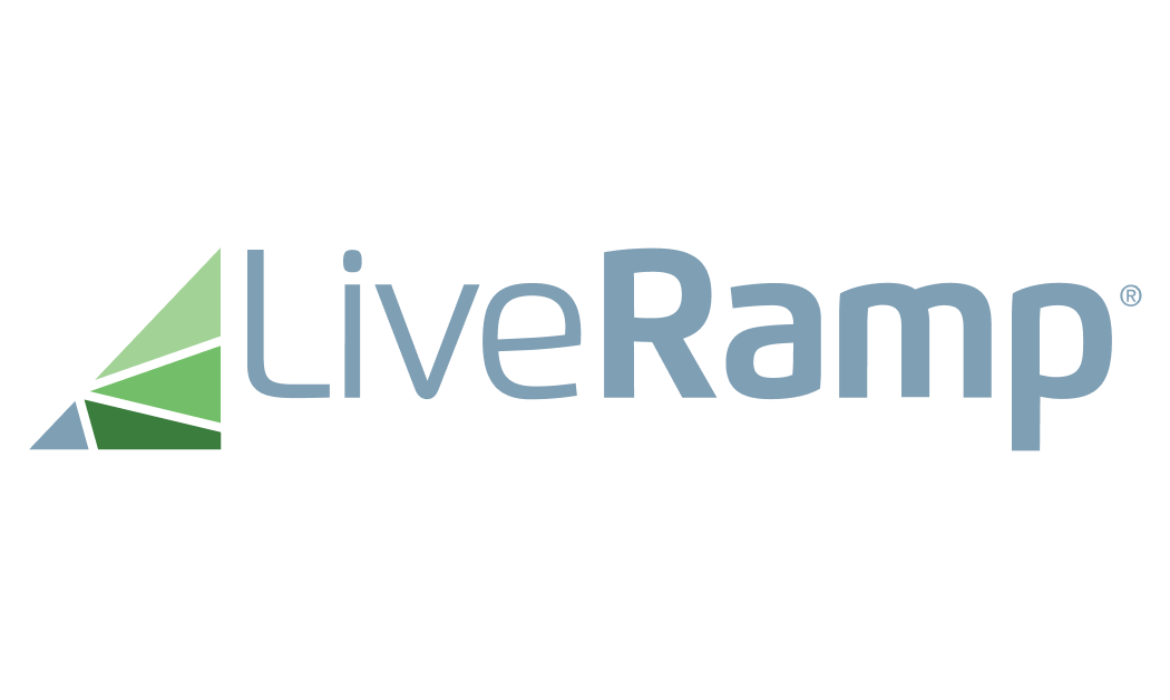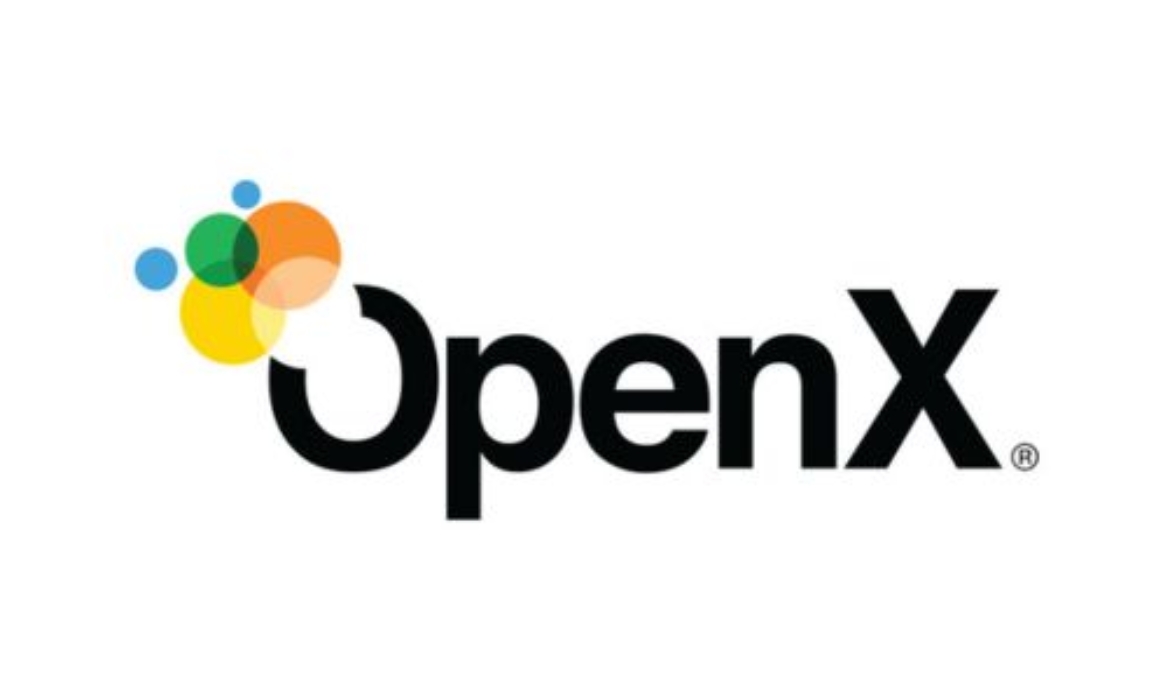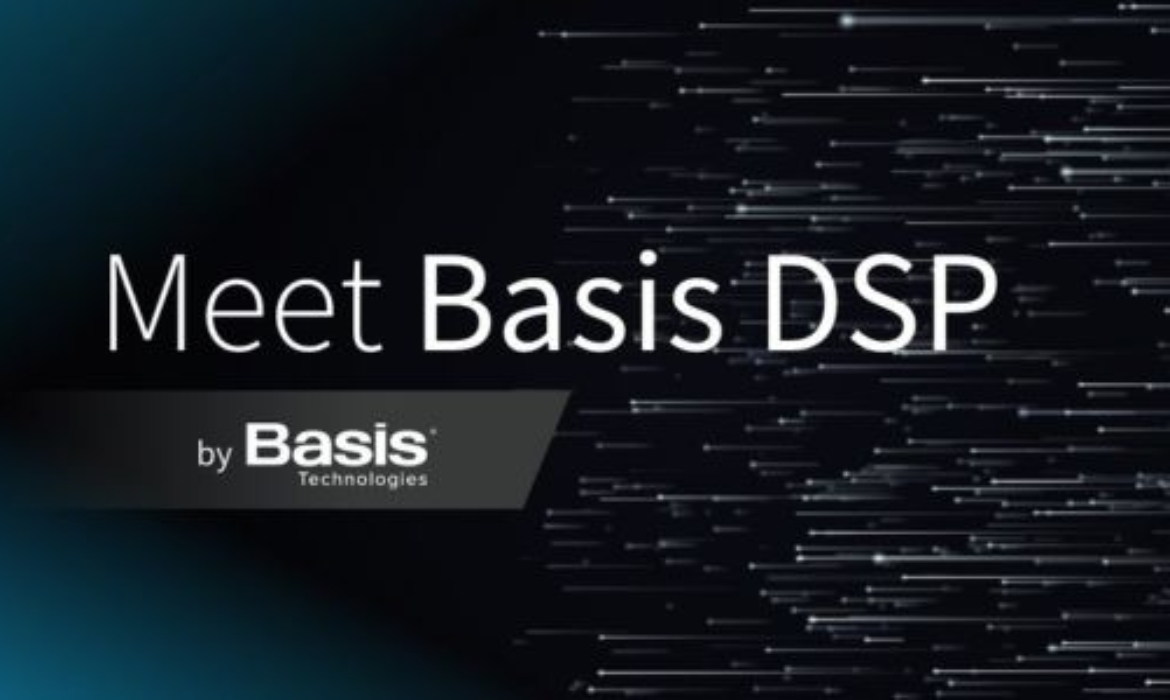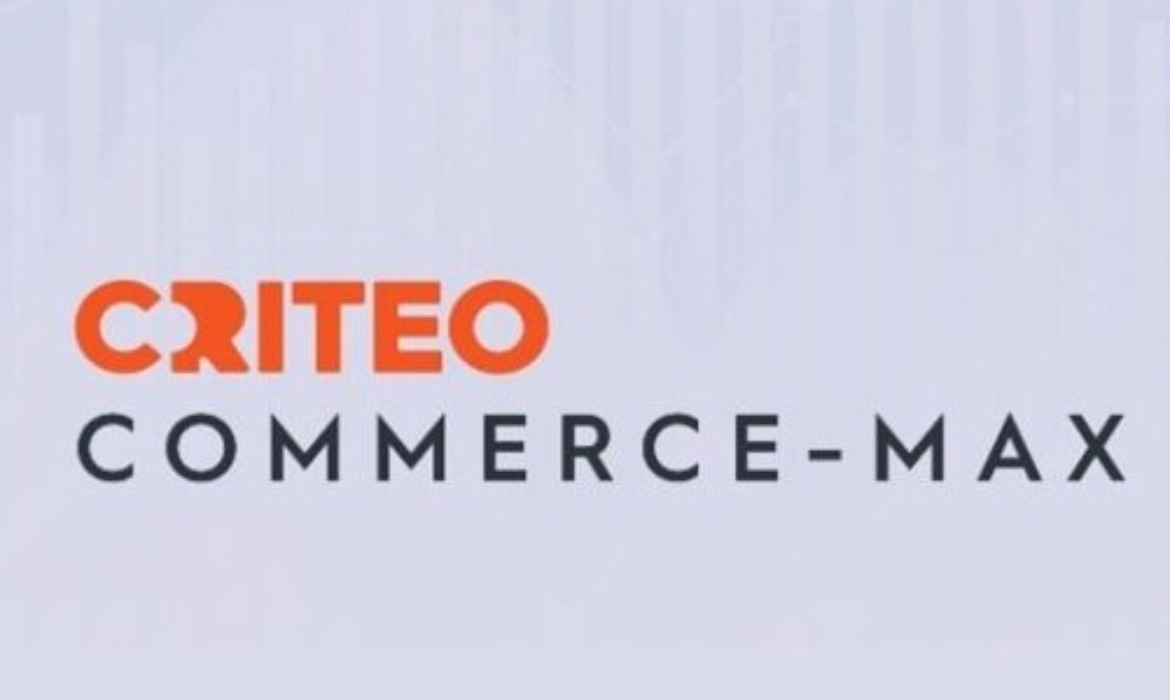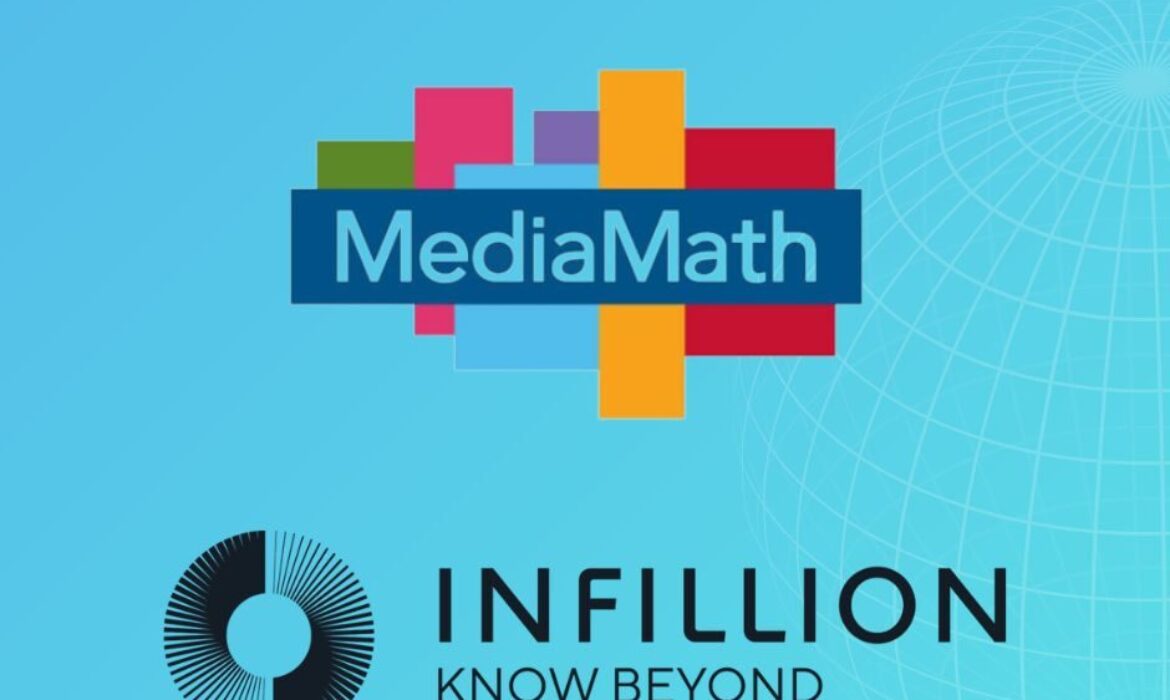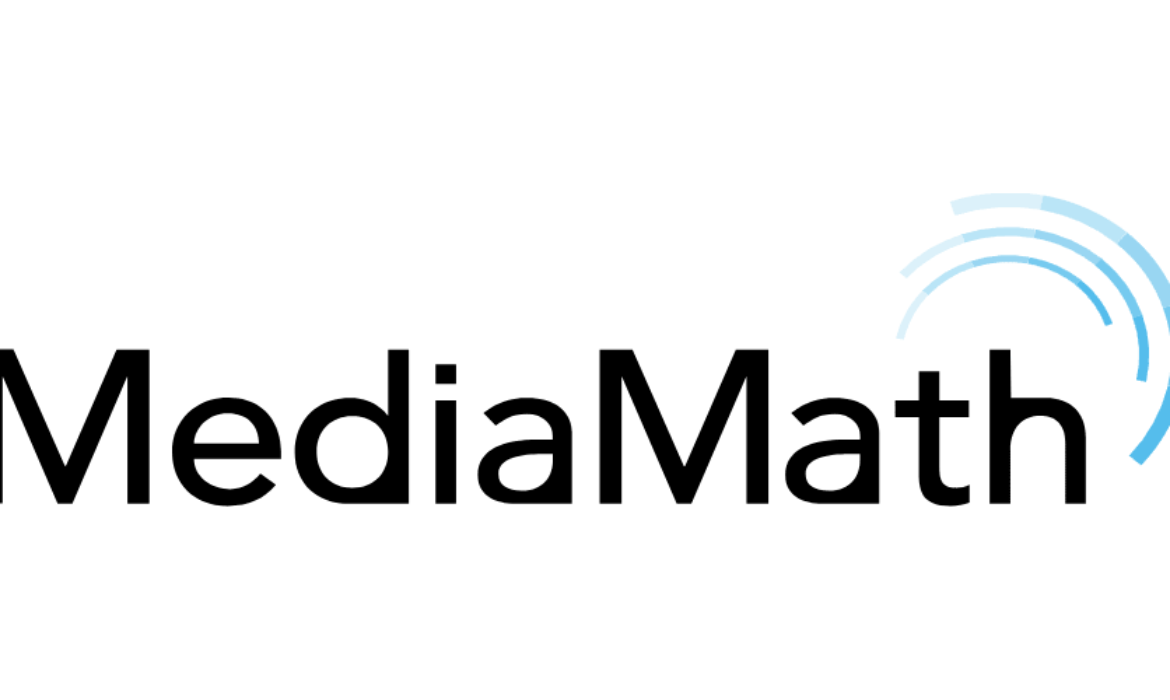Yahoo DSP Leverages Both AI and First Party Data For Campaign Advancement
The central AI suite that powers performance-based solutions within the Yahoo DSP, Yahoo Blueprint, was introduced by Yahoo Advertising. Yahoo Blueprint is powered by more than 335 million globally logged-in Yahoo users. It improves decision-making, simplifies AI, and acts as a result-driven guide for advertisers at every stage of the campaign lifecycle. Together with Fortune 500 brand partners and agencies, this new AI suite has launched. With the use of valuable first-party data and state-of-the-art AI technology, Blueprint provides real-time optimization recommendations that enable advertisers to meet their campaign goals and determine the lifetime value and conversion potential of each user.
AI for Yahoo DSP
Yahoo’s demand-side platform (DSP) will benefit from artificial intelligence in order to enhance data visualization, forecasting, optimization, and predictive audiences. Using first-party data, the Blueprint tool can find customers who match the expected value of the brand’s current customer base. Using Yahoo’s algorithmic forecasting tool Omniscope, it allows advertisers to predict the incremental reach of connected television (CTV) advertisers against linear audiences.
Yahoo’s new strategy reflects how the programmatic market is changing. Yahoo left SSP Business because a large number of publishers can now effectively monetize their inventory through programmatic changes to header-bidding wrappers. They therefore depend less on publisher tech platforms. In a similar vein, the introduction of the Blueprint is a reaction to growing buy-side sophistication.
Omniscope – Blueprint’s forecasting tool
One of Yahoo Blueprint’s primary algorithmic forecasting tools, Omniscope, lets advertisers plan and evaluate expected performance and reach across a range of channels, exchanges, formats, and targeting parameters. It assesses how adjustments to targeting parameters can affect scale, projected spending, and winnable impressions, and it facilitates mid-campaign planning and optimization.
Yahoo DSP uses location and purchase data
Yahoo’s solution leverages location and purchase data from users logged in with Yahoo email addresses, as well as first-party behavioral data sourced from their owned-and-operated websites. Yahoo DSP clients can expect better performance with Yahoo Blueprint, leveraging years of AI experience to bid on the right impressions, optimizations through AI co-pilot that suggest campaign enhancements and auto-optimize, and an improved and straightforward user interface (UI) that helps advertisers and increases efficiency. Yahoo’s DSP has long possessed AI capabilities, but Blueprint is able to present algorithmic recommendations for several campaigns on a single dashboard.
Read More: Yahoo Advertising Launches New Suite of Premium Ad Formats Edge-2-Edge
Yahoo Blueprint benefits Yahoo DSP clients
- Better outcomes: Sturdy performance that makes use of years’ worth of AI experience to bid on the appropriate impressions at the appropriate time and cost.
- Self-assurance in optimization: AI copilot that suggests ways to improve campaigns and automatically optimizes to fulfill advertisers’ objectives.
- Efficiency and Simplicity: A more efficient and straightforward user interface that directs advertisers.
Blueprint workflow
In order to improve performance, Blueprint first considers the advertiser’s Key Performance Indicators (KPI) before making suggestions for target audiences or Private Marketplaces (PMPs). These suggestions are accompanied by forecasts of the effects that various audience targeting techniques will have on the designated KPIs. Customers are free to choose whether or not to use these recommended campaign tactics.
First-party data advantage
All Yahoo DSP clients have easy access to the blueprint via the current dashboard. New data visualizations, audience insights, campaign forecasting tool integration, predictive audience modeling, and customer lifetime value features are all introduced during the first phase of implementation. Yahoo intends to release additional information in the upcoming summer. Additionally, when it fits the needs of a particular campaign, Yahoo’s Backstage direct publisher connection is incorporated as a supply source for Blueprint optimization. Yahoo emphasizes how important its first-party data pools are. It is easier to comply with privacy regulations when first-party data that has been collected with user consent is used.
Transparency and accountability
Even though AI-driven optimization tools are very beneficial, there are still transparency issues. This is especially when it comes to competing products like Advantage+ from Meta and Performance Max from Google. Yahoo is dedicated to encouraging candid dialogue with advertisers about the information that goes into its algorithmic recommendations. Notably, when it comes to executing campaign modifications, advertisers have the last word.
Read More: Yahoo and LiveRamp Expand Partnership, Scaling Addressability
Experian Identity and Syndicated Audiences Integrated in Samsung DSP
Collaboration is essential in the fast-paced world of advertising to stay up to date with the ever-changing behaviors of consumers. Experian and Samsung Ads have teamed up to tackle this issue. To improve programmatic advertising efforts, Samsung Ads and Experian have announced a partnership that will integrate Experian’s identity and audience data into Samsung’s DSP. Better-targeted campaigns, creative ad spends, increased campaign attribution, and reliably safe branding opportunities are anticipated from this combination of resources. With the help of this partnership, marketers will be able to produce impactful and captivating content that appeals to the right audience at the right moment.
Samsung Ads-Experian Partnership
Through this new partnership, Samsung Ads and Experian promise to maximize the reach, effectiveness, and efficiency of advertising campaigns by combining the knowledge and precision of both companies. Marketers will have access to a smooth, effective tool that will guarantee that their messages are seen and resonate with target audiences, resulting in significant interaction and quantifiable results.
Samsung DSP
To improve campaign targeting and advertising personalization, Experian’s identity capabilities and syndicated audiences have been integrated into Samsung’s demand-side platform (DSP). The Samsung DSP is renowned for its advanced targeting abilities, which combine contextual targeting with data-driven strategies, and the ability to reach addressable TVs. With easy access to Experian’s audience segments and consumer insights, marketers can anticipate a notable increase in the impact and relevance of their advertising campaigns.
Read More: PubMatic Announces Groundbreaking Data Collaboration with Experian
Orchestrating reach and precision
With the help of Samsung’s extensive global reach, the Samsung Ads suite of advertising solutions offers advertisers unparalleled chances to interact with consumers on all screens at all relevant times, yielding significant and measurable outcomes. Combining Experian’s comprehensive data on households and individuals with Samsung Ads’ ACR viewership data from millions of devices allows for more precise targeting, which can be used to allocate media investment to drive better engagement, conversion rates, and return on investment (ROI) while reducing waste.
Samsung DSP key features
According to Samsung Advertising, more complexity is not necessary for smart advertising. Every user-friendly feature of Samsung DSP is designed to simplify media once more, allowing advertisers to more successfully reach their audience across all screens.
Addressable TV
By providing tailored content to particular households, addressable TV elevates and personalizes traditional viewing experiences while increasing interaction and connection.
Contextual targeting
Increases the relevance and impact of advertisements by putting them in context with related content to foster audience engagement.
Worldwide reach
Handle the digital landscape with dexterity. It can provide content to millions of users on a variety of platforms and devices in brand-safe settings.
Targeting based on data
Integrate Experian’s insights with Samsung Ads’ unparalleled proprietary device data to convert global reach into unique customer engagement.
Read More: Samsung Ads Partners with Brightline To Boost CTV Advertising
Benefits for advertisers
Improved audience targeting
Marketers can develop highly targeted campaigns that reach the right audience at the right time. They can utilize Experian’s syndicated audiences and Samsung Ads’ ACR data. Campaign performance can be significantly improved as a result, with higher engagement, conversion rates, and ROI
Optimized ad expenditures
Experian’s data can be used to identify and avoid audiences that are unlikely to be interested in the products or services. It can thereby reduce ad waste. This can assist in making the most of the funds allocated for advertising.
Enhanced attribution
Advertisers can gain a deeper understanding of the consumer journey. They can monitor audience interactions with advertisements across various platforms and devices. Campaign optimization and overall performance can be achieved with the help of this data.
Brand safety
With Samsung Ads’ brand safety solutions, advertisers can guarantee that their ads are shown in secure and safe settings. This aids in preserving the integrity and reputation of the brand.
Here’s what they said
Chris Feo, SVP, Sales & Partnership, Experian said,
Navigating the dynamic landscape of digital advertising requires innovative solutions and strategic collaborations. This partnership with Samsung Ads exemplifies our commitment to empowering advertisers with data-driven insights that reach and resonate with audiences. With Experian Marketing Data directly accessible within the Samsung DSP, advertisers are equipped to orchestrate campaigns with unprecedented precision and impact, marking a significant stride in personalized advertising.
Alex Boras, Platform Lead, Samsung DSP added,
The new partnership between Experian and Samsung Ads is an exciting development for advertisers as they look to maximize the effectiveness of their marketing campaigns. With hands-on access to Experian’s identity solution and audiences directly within our platform, Samsung DSP, advertisers can now better address their most important audiences on the screens they use most.
Read More: Samsung Ads and Epsilon Partner for First-Party Data Advancements
AlgoriX and LiveRamp Turbocharge Cookie-less Digital Advertising
A diverse alliance between AlgoriX and LiveRamp aims to speed up cookieless transactions for the digital advertising industry. AlgoriX will integrate LiveRamp’s Authenticated Traffic Solution. Furthermore, it will allow its demand-side platform (DSP) and supply-side platform (SSP) users worldwide to transact on LiveRamp’s RampID.
AlgoriX integrates LiveRamp’s RampID to enhance digital advertising
Via LiveRamp’s data cooperation platform, over 450 of the top advertisers in the world initiate campaigns on RampID. With AlgoriX, LiveRamp’s solutions can now be connected internationally with over 165 DSPs and SSPs, allowing for large-scale reach of high-value audiences and the delivery of tailored experiences across browsers, mobile devices, and CTV. To further improve the AlgoriX SDK’s offering for developers hoping to boost their business in the mobile and in-app advertising arena, AlgoriX will also integrate LiveRamp’s Authenticated Traffic Solution SDK. With the help of AlgoriX’s SDK, these developers can now swiftly implement LiveRamp’s Authenticated Traffic Solution, improving inventory monetization and enhancing the addressability of their opted-in app users.
Read More: Yahoo and LiveRamp Expand Partnership, Scaling Addressability
Here’s what they said
Frederic Liow, AlgoriX SVP for revenue growth & strategy said,
As advertisers look to address signal loss on mobile, authenticated inventory offers a powerful solution that can deliver results for publishers and marketers that often surpass what they were generating with cookies and mobile device IDs. LiveRamp has helped lead the market in advancing authenticated identity as a viable alternative to help the ecosystem prepare for a post-signal loss future, and integrating our solutions will provide a powerful boost to our customers and developers.
Travis Clinger, SVP, of activations and addressability, LiveRamp added,
Consumers in APAC are mobile-first, which made it a natural fit to partner with AlgoriX given their history as a leader in the region and in the mobile app space. LiveRamp has proven it can drive results for mobile developers, and as the market experiences more signal loss, with these new partnerships there’s no excuse for stakeholders to delay benefitting from the superior results authenticated identity can drive.
Read More: LiveRamp Partners with Co-Op to Enhance Retail Media
Vistar Media Launches Dynamic Creative for Real-Time Sports Updates
A leading global provider of programmatic technology for digital out-of-home (DOOH), Vistar Media, recently unveiled its real-time sports updates’ dynamic creative capabilities to assist brands in better driving fan engagement, tune-in intent, and affiliation with particular games based on real-time sports updates. In order to generate localized fan excitement, this novel product enables marketers to seamlessly incorporate real-time, league-specific sports feeds into their advertising creatives, including unique matchups, live scoring, and game results.
Real-time sports updates’ dynamic creative activation
One distinctive activation feature that distinguishes evolving creativity in the DOOH advertising environment is “Real-time sports updates.” By using data to automatically update some parts inside a single advertising asset, dynamic creative enables marketers to increase the relevance of their DOOH ads. In order to efficiently change creative based on a campaign’s objectives, audience, and current situation, this creative strategy includes a number of eye-catching use cases, such as “real-time sports updates.” Leading advertisers including the NBA and Bally’s Sports South have recently activated ‘real-time sports updates’ campaigns.

Image credit- Vistar Media
Read More: Vistar Media and Ten Square Collaborate for Immersive DOOH
In order to engage and enthrall their sports-obsessed audience, marketers can easily activate “real-time sports updates” DOOH campaigns with the return of professional and collegiate football and basketball.
Here’s what they said
Leslie Lee, SVP of Marketing at Vistar Media said,
If you’re trying to inspire someone to take an action – from tuning in to a game, to placing a bet, buying a ticket or even buying beer – you should prioritize making your message relevant and immediate. For sports-related marketing, featuring real-time game updates or upcoming match details makes your ads specific, engaging and likely to drive results.
Read More: Vistar Media Enhances DOOH Advertising with Retail Inventory Package
OpenX Launches ConteX: A Flexible, Contextual Advertising Marketplace
OpenX Technologies Inc., one of the top omnichannel supply-side platforms in the world, announced the debut of ConteX. Within the SSP, is an OpenX marketplace. It gives companies and agencies the ability to use both pre-made and custom premium contextual advertising solutions without requiring them to sign cumbersome contracts or wait a long time. Without relying on third-party cookies, this brand-new, future-proof invention delivers end-to-end targeting and activation.
The future of contextual buying
Buyers are increasingly looking for accurate and high-quality regionally suitable targeting solutions that eliminate the need for them to negotiate separate agreements with various data partners. 54 percent of marketers intend to employ contextual data more frequently in their campaigns as targeted media-buying changes in reaction to third-party devaluation. Additionally, ConteX provides contract-free contextual targeting options for customers. As a result, they can directly activate premium data partners within the SSP on conditions that have already been agreed upon. Additionally, it makes it simple for advertisers to implement strategies that are most effective in their area without having to negotiate terms with each partner. Additionally, ConteX blends contextual and supply-side targeting to give more premium supply, higher accuracy, and unmatched insights into programmatic campaigns.
Read More: Adlook – Adsquare Join Forces for Advanced Brand Growth Solutions
Effective targeting, contract-free activation, and broader scale
With ConteX’s data partners reaching well beyond on-page content, contextual targeting has grown more sophisticated and efficient. Cooking aficionados are targeted in any vertical or type of premium content they are engaging with, rather than only through cooking-related material, using models to forecast audience behavior. With ConteX, OpenX continues to advance in its mission to create solutions that prioritize both innovation and quality. Without using cookies or authenticated IDs, each ConteX premium data partner employs a unique, proprietary methodology to let customers reach highly targeted audiences anywhere:
- Audigent: a data activation, curation, and identity platform
- Captify: a search intelligence platform for the open web
- Cross Pixel: audience and contextual targeting solutions
- Dstillery: a leading AI ad-targeting company
- Permutive: an audience platform powered by publisher first-party data
- Silverpush: a hyper-contextual advertising platform powered by AI
- Sqreem: a digital behavior aggregator where AI merges deep insights and media targeting.
OpenX creates an audience and shares a data-driven deal ID with the buyer to activate these segments. The buyer then activates the deal ID within their preferred DSP after working directly with the data partner to set up the audience.
Here’s what they said
Joseph Worswick, VP of EMEA and Head of Global Sustainability at OpenX said,
This enhancement in OpenX’s supply-side targeting capabilities provides brands with a valuable solution ahead of the deprecation of the third-party cookie. This off-the-shelf innovation helps brands navigate complex regional compliance requirements related to data and targeting, reducing the workload of programmatic traders. This is an important step towards providing effective targeting solutions for the open web, which will ultimately help brands reach their desired audiences more effectively.
Read More: Captify and Adform Partner to Pioneer Contextual Activation Solution
Basis Technologies Enables Real Time Snapchat Ad Evaluation Via DSP
Global programmatic advertising and media automation solutions provider, Basis Technologies, recently released a first-to-market integration. The solutions which utilize a demand side platform (DSP), will allow marketers to evaluate Snapchat ads. It is automation fueled, which enables smooth workflows and top performance. Basis media automation platform users can now obtain real-time performance information from Snapchat’s self-serve platform. With 750 million MAUs, Snapchat is a huge advertising platform. Basis is offering comprehensive campaign planning and analysis across programmatic, direct, search and social ad channels. With this, Basis is promoting interoperability in digital advertising.
Basis DSP for advertisers
Advertisers must collaborate with a wide range of platforms and providers as they attempt to reach consumers through digital devices. Each vendor has special features and user interfaces of their own. It’s essential to monitor ad performance across a variety of channels to assess the efficacy of campaigns and ad spending. Marketers can easily manage, measure, and analyze ad effectiveness with Basis’ comprehensive third-party platform connectors without having to switch between platforms. Campaigns are optimized using data for increasing the impact of marketing budgets.
Read More: iSpot acquires 605 To Boost TV Measurement, US Data Footprint
Basis Technologies and other integrations
Basis gets its ad delivery stats from major ad servers, social media platforms, search engines, and its built-in DSP. It already integrates delivery data from Google Search, Microsoft (Bing and LinkedIn), Meta (Facebook, Instagram) and TikTok among third-party ad providers. It makes cross-channel campaign planning, performance monitoring and pacing easier for media specialists. They substantially reduce the time needed to alter, prepare, and consolidate reports as well as check the status of campaigns that are currently running.
Benefits of data feed from Snapchat and other ad platforms integrated into Basis
Revenue
The everyday burden of finding errors to guarantee that every dollar intended across vendors is delivered is made easier by revenue. Additionally, it guarantees that financial reconciliation proceeds accurately and quickly.
Speed
In order to evaluate the pace of specific campaigns, media professionals must enter multiple platforms. Speed eliminates these processes and saves time, allowing them to see and address problems more quickly.
Control
Control gives media buyers the ability to pace and optimize campaigns as well as assess cross-channel campaign effectiveness based on an all-encompassing perspective.
Clarity
Clarity eliminates the need for manual spreadsheets or other data analytics tools to track third-party sources and allows for a centralized view of many sources.
Intelligence
As a single source of truth, intelligence eliminates data silos and compares user ad interactions across channels to total campaign engagement.
Read More: GroupM Bolsters Media Decarbonization with SeenThis Partnership
The only one of its kind integrations
No other media DSPs’ media management platforms include search and social media connectors that provide automated standardized reports for sources. Basis users don’t need to enter into third-party systems, retrieve campaign data, download spreadsheet reports with numerous line items, and clean up reports to align them with the desired data arrangement. Marketers may view performance information in real-time using Basis platform. It will help acquire insights on campaigns operating on Snapchat and other search and social platforms. It also includes programmatic, vendor-direct, search and social media advertising capabilities. The core of the platform is an award-winning omnichannel DSP that offers programmatic guaranteed and private marketplace partnerships.
Here’s what they said
Amy Rumpler, SVP of search and social services, Basis Technologies said,
Basis Technologies offers the only technology for marketers to manage Snapchat advertising alongside other advertising solutions commonly used. Snapchat continues to gain users and influence, making its campaign performance data an important aspect to automatically pull into our platform. With our latest integration, Basis continues to fill the needs of media agencies and teams that manage robust, broad campaigns to reach customers.
Read More: Basis Tech-FreeWheel Partner for Direct Access to Premium CTV Inventory
Criteo’s Commerce Max DSP Unites Retail Media with General Availability
Criteo, the commerce media firm has made its self-service demand-side platform (DSP) Commerce Max, generally available. Brands and agencies will now have a single point of access to retail media inventory both on-site and across premium publishers off-site. Criteo is extending its array of retailer monetization solutions in addition to Commerce Max. Retailers will have the ability to meet previously unmet demand thanks to it. It will also open the door to an amalgamation of online and offline monetization strategies.
The world of retail media
Advertisers wishing to interact with consumers and learn more about their purchasing habits have a lot to gain from the rapidly expanding field of retail media. But with so many shops entering the retail media sector in recent years, the industry has grown unstable. However, it has been incredibly effective for merchants trying to expand their existing revenue streams. It has also benefited companies and organizations trying to actively engage customers in the purchasing process. Retailers, brands, and agencies have not, however, been able to fully utilize retail media due to fragmentation in the market.
Creating scalable commerce
With Commerce Max DSP, Criteo was a pioneer in introducing digital measuring standards to retail media. Additionally, it enables marketers and agencies to track invalid visitors to merchant websites in all ad formats. This is thanks to its connection with Integral Ad Science. By 2024, they will also contain sponsored and native products. In 2022, GroupM and Best Buy, a retailer of consumer electronics, launched a marketing test with the DSP. Over the course of time, Commerce Max signed up 10 shops, including Shipt, Macy’s, and Best Buy.
When running both onsite and offshore advertising through the platform, retailers who have finished campaigns have seen conversion rates increase by an average of more than double. Brands and agencies from all over the world can obtain data and inventory from various retailers and marketplaces using Commerce Max DSP. They can use it to expand these audiences offsite and locate relevant audiences on these sites. Closed loop measurement serves as the foundation for this platform. It enables advertisers to rapidly and effectively assess the success of campaigns and optimize them accordingly.
Read More: Vistar Media Enhances DOOH Advertising with Retail Inventory Package
Unifying Retailers’ Approaches
The merchant monetization solution suite is the second element that Criteo has released. It is the next stage in the advancement of Commerce Yield, Criteo’s primary monetization technology. Along with giving retailers and marketplaces access to a full suite of media capabilities, it will also benefit businesses like automakers, theaters, transportation providers, airlines, and more. In order to create Commerce Yield, Criteo combined its existing Retail Media Platform with a number of products acquired through recent strategic acquisitions. They consist of
- Commerce Yield Marketplace: It will assist monetization officers in integrating marketplace methods and formats thanks to Criteo’s strategic acquisition of Mabaya.
- Commerce Yield In-Store: By combining their in-store monetization technologies, Brandcrush and Criteo, advertisers now have access to a greater variety of offline inventory.
- Commerce Yield Insights: Previously known as Gradient, the package of insight and analytics solutions offers digital-off-the-shelf data to assist with enterprise-level retail media buys.
Here’s what they said
Megan Clarken, CEO at Criteo, said the company’s emphasis is to enable all commerce-driven firms to buy and sell to audiences engaged in shopping. She further added,
The process has to be frictionless, and it has to solve for fragmentation. With today’s launch, we’re equipping our clients with the right tools to cut through and connect in a more unified retail media ecosystem that ultimately creates more unity across the broader advertising marketplace. Our focus is enabling all commerce-driven companies to buy and sell audiences engaged in shopping. The process has to be frictionless, and it has to solve for fragmentation. With today’s launch, we’re equipping our clients with the right tools to cut through and connect in a more unified retail media ecosystem that ultimately creates more unity across the broader advertising marketplace.
Billy Dyer, Club Team Shopper Marketing Lead at Unilever following another successful test with GroupM and Unilever in which the brand’s conversion rate rose by over 400% praised Criteo saying,
Through Criteo we now have one point of entry to a pivotal retail media network, all within a single platform – Commerce Max – that applies the same KPIs to retail media as those we use for our programmatic buys. Combining onsite and offsite targeting enables us to focus media spend across a broader part of the shopper funnel while finding the most suitable audiences wherever they are.
Mark Heitke, Director of Ad Products and Audience Strategy at Best Buy Ads commented,
We’re excited to be at the forefront of the rollout of the Commerce Max platform, starting with its initial testing phase and now its general availability. The platform offers a variety of onsite and offsite capabilities, giving our brand partners even more options to reach our audiences in meaningful ways.
Read More: Omnicom and Criteo Unveil First-Of-Its-Kind Retail Insights Alliance
Infillion Acquires MediaMath After $22M Bid Bankruptcy Deal
The ad tech company Infillion was identified as the top contender to acquire the recently insolvent DSP MediaMath during bankruptcy proceedings on August 23. Given that the company was originally valued at $1 billion, the company’s winning bid of $22 million was a great deal. According to Digiday, MediaMath CEO Joe Zawadski’s investment fund company, AperiumVentures, provided advice on the acquisition. Additionally, he sparked the idea that the ad tech expert would try to get back in touch with the business he created more than 15 years ago. According to court records, Genius Sports, a London-based provider of sports data and video streaming, placed the second-highest bid for MediaMath assets for $20.55 million.
On June 30, MediaMath submitted a Chapter 11 petition. The DSP service provider has a new home thanks to Infillion’s acquisition. The Delaware bankruptcy court accepted Infillion’s cash offer for MediaMath’s DSP and DMP holdings on August 23. One of the ad tech stories this year has also been concluded by a bankruptcy filing. Dozens of businesses have lost money as a result of one of the most well-known names in ad tech’s Chapter 11 procedures. Some others even speculate about what it indicates for the most vibrant industry in digital media.
Read More: DoubleVerify Acquires Scibids, Reinforces AI-Powered Solutions
MediaMath’s Downfall
MediaMath has 16 years of experience in the ad tech sector. However, it has recently had trouble keeping up with rivals like Google, Amazon, and The Trade Desk. It was unable to collect the required cash despite seeking more money a while ago this year and almost concluding a $70 million deal with a possible acquirer. The upshot was that the business filed for bankruptcy, which unfortunately resulted in the loss of nearly 300 employees.
MediaMath was one of the early pioneers in ad tech. It is usually regarded as the very first DSP in the sector. Thus, MediaMath’s surprising Chapter 11 filing roughly two months ago is what prompted the sale. This dramatic tale comes to a close with Infillion’s acquisition as the company’s former customers left. For the latter, the Infillion-MediaMath merger represents a remarkable fall from grace. Infillion will provide a modest 2% of MediaMath’s peak value.
Read More: Magnite Acquires Carbon That Will Allow Publishers Unlock The Value of Audience
Infillion’s Acquisition of MediaMath
It makes sense for Infillion to include MediaMath in its ad tech portfolio. The location data business Gimbal and the video ad tech platform TrueX gave birth to the video advertising platform. It focuses on the interactive advertising units that Gimbal purchased from Disney. A year ago, Gimbal and TrueX changed their names to become Infillion.
The 15-year-old demand-side platform that MediaMath brings to the story will enable Infillion’s programmatic ad tech stack to take shape. However, the business revealed in its bankruptcy filings that it owed over $125 million in trade obligations to a number of corporations. They include Google, Microsoft’s Xandr, and ad tech firms including PubMatic and Magnite. What will transpire to these outstanding invoices is still up for discussion as Infillion might be interested in rekindling those ties. Infillion is yet to confirm the accountability for MediaMath’s outstanding debt.
Positive outlook
Infillion’s founder and executive chairman, Rob Emrich, stated that the company anticipates MediaMath would be in a good spot to expand under new management. In the course of the auction on Wednesday, Emrich expressed his opinion that over the following five years, the MediaMath tech stack will produce $1 billion in inventory traffic, data fees, and hosting contracts.
Our current financial model calls for an additional $30 million There will be operating losses in the next three years as we bring this business back. Plus an additional $40 million In working capital.
In any case, Infillion seems certain that it can resurrect MediaMath’s advertising technology and start a new chapter. Whether the acquisition turns out to be profitable or a major oversight on Infillion’s part, only time will tell.
Read More: MediaMath Shutdown: Ad Industry in Turmoil, Seeking Alternatives
MediaMath Shutdown: Ad Industry in Turmoil, Seeking Alternatives
In a surprising and unforeseen development, MediaMath, a renowned programmatic advertising demand-side platform, has made the shocking announcement of its immediate shutdown, sending shockwaves throughout the advertising industry. This unexpected turn of events has left advertisers, agencies, and customers in a state of chaos as they urgently seek alternative solutions to fill the void left by MediaMath.
The Rise and Fall of Mediamath
MediaMath founded in 2007, is a trailblazer in programmatic advertising, revolutionized brand-audience connections with its advanced demand-side platform. By leveraging data-driven insights and real-time bidding decisions, MediaMath enabled precise audience targeting, efficient campaigns, and improved ROI. Through strategic partnerships and a commitment to transparency, MediaMath shaped the digital advertising landscape, earning a solid reputation in the industry.
Since its founding, MediaMath had raised over $600 million and boasted an impressive client base of 3,500 brands and agencies. However, the anticipated successful exit through going public or acquisition never materialized. To address financial challenges, MediaMath had to recapitalize with Searchlight Capital last year, resulting in the loss of equity for early shareholders, including co-founder Joe Zawadzki. Additionally, the company had an outstanding $150 million credit facility from Goldman Sachs. Despite rumors of potential acquirers such as IBM, Magnite, Amazon, Tremor, and IPONWEB, MediaMath struggled to find a suitable buyer.
It is expected to file for Chapter 7 bankruptcy. This will result in asset liquidation to repay obligations. After settling wages and salaries, primary lender Goldman Sachs will be paid, followed by other creditors if there are remaining proceeds from asset sales. Most of MediaMath’s 300+ employees will lose their jobs, with a small team retained for essential functions during the bankruptcy process.
Impact on advertisers
The abrupt shutdown of MediaMath has caused significant upheaval among advertisers and agencies. These entities now face the daunting task of finding alternative platforms to relocate their ad campaigns, requiring substantial resources and adjustments. The loss of MediaMath’s tracking pixel has further compounded the challenges, hampering the ability to analyze user behavior and optimize future campaigns. The lack of prior notice has intensified the difficulties faced by advertisers and agencies, emphasizing the need for clear communication during times of distress.
In the meantime, the closure of MediaMath creates an opportunity for other DSPs such as The Trade Desk, or Google to step in and fill the void. The demise of the DSP is seen as a setback for the ad tech industry, and industry insiders express sadness over the company’s fate.
This unexpected event serves as a stark reminder of the challenges inherent in the dynamic ad tech landscape. It underscores the importance of financial stability, strategic planning, and clear communication to navigate such uncertainties. Moving forward, industry players will undoubtedly reassess their strategies, mitigate risks, and seek to learn from the unfortunate fate of MediaMath.
Is Apple Building A Demand Side Advertising Platform?
Apple appears to be launching its own demand-side platform, though details are thin. Recent job postings hints that the company is expanding its ad business. An Apple job posting indicated that the company is looking for a product manager with 8 years of experience building a mobile demand-side platform and optimizing mobile campaigns.
Digiday broke the news that hiring in the Ad Platforms division has risen significantly since the beginning of 2022. It also highlighted job listings that state Apple is building “the most privacy-forward, sophisticated demand side platform possible”.
Read N0w: AdTech Vs MarTech: Let’s Settle This Once For All!
Why a DSP?
For any ad company, DSPs represent their intent. Apple’s decision to make it more difficult for companies to sell ads within its ecosystem has enabled it to grow exponentially.
The DSP is a crucial part of any ad tech stack with the goal of winning more media dollars. Basically, it’s the technology that allows a marketer to automate their advertising. The automation of the process is important because it means marketers scale up campaigns based on performance indicator factors, aided by machine learning. It is important that the platform is well-engineered so that advertisers are satisfied and will spend more on it.
In order to create a good DSP, a significant investment of time and money is required. Times have changed and Apple seems to be changing its position on online advertising. This is settled through a DSP.
Apple has scaled and built its advertising business behind the scenes, leveraging its ecosystem assets and user data, they have created seamless consumer experiences. The next logical step in this evolution is for Apple to build its own DSP. As a result, they will have full control over how and where their data is used, preventing leakage outside of their walled garden.
Apple adds new ad plans
Earlier this month, Apple announced they were adding two new advertising slots to its App Store. In the near future, developers will have the ability to place ads outside of the Search tab and Search results. The new advertising spot will appear alongside editorial content on the ‘Today’ page of the App Store. Another ad placement will appear on product pages under the tab “You May Also Like”.
Will the DSP succeed?
Long-time Apple observers will know Apple’s iAds failure. It was a mobile advertising platform that allowed third-party developers to embed advertisements into their applications directly. But Apple takes another chance at that market, to add to its growing pile of services revenue sources. Introducing new advertising opportunities in the App Store and recruiting a team to build its own DSP.
As DigiDay notes, it remains unclear if the intended DSP is geared toward serving ads solely on Apple’s owned and operated properties, such as the App Store itself or on the millions of iOS apps, or even on third-party properties such as the mobile web.
For industry experts, Apple’s plans to launch a DSP are not particularly surprising especially considering industry trends and its privacy-oriented mission.

